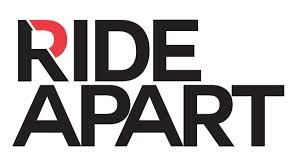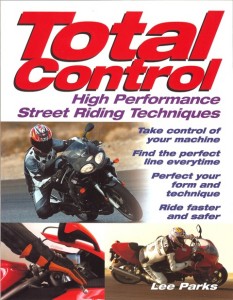 This morning another article on the Ride Apart Facebook timeline caught my attention! It’s another one by Wes Siler entitled, “How To Lay ‘Er Down – And, Why You Probably Shouldn’t”
This morning another article on the Ride Apart Facebook timeline caught my attention! It’s another one by Wes Siler entitled, “How To Lay ‘Er Down – And, Why You Probably Shouldn’t”
I found the article content to align with my own experience. Wes writes that the first step is to: Use Your Head. He suggests that we should ask ourselves, “what will more effectively slow my bike?” In most cases, effectively braking in a straight line, or slightly away from the potential obstacle is the best solution. It implies that we already know how to brake well, and can make this decision and follow through basically without thinking, because accidents happen too quickly to think them through.
 He then suggests that step two is to Set Yourself Up For Success. Obviously the biggest place to start is to be sober… I couldn’t agree more. But after that, it means having already put in time to get proper training and experience in advanced braking skills. For me, I have received this through Lee Park’s Total Control Advanced Riding Clinics (Level I) and follow up skills workshops. Even with this advanced training, I still didn’t brake right, lost control and dumped my bike on November 19, 2013, breaking my ankle in the process!
He then suggests that step two is to Set Yourself Up For Success. Obviously the biggest place to start is to be sober… I couldn’t agree more. But after that, it means having already put in time to get proper training and experience in advanced braking skills. For me, I have received this through Lee Park’s Total Control Advanced Riding Clinics (Level I) and follow up skills workshops. Even with this advanced training, I still didn’t brake right, lost control and dumped my bike on November 19, 2013, breaking my ankle in the process!
My personal plan is to take the Level 2 course, and additional skills workshops on a more regular basis.
Wes writes that step three is to Avoid The Obstacle. If sliding in a straight line from the point where you are to the obstacle will avoid a crash, then laying the bike down might work. If not, you may need to direct your bike in a different direction while braking. “Try and force yourself to look where you want to go, away from the obstacle, and apply your brakes progressively, “loading” the front tire before reaching max braking force. ” Again, this recommendation suggests being well-prepared and trained before hand!
Know When To Jump Off is Wes’ suggested step four. He writes, “given the average road surface, expect to lose an additional 1 mm of flesh for every mph you’re going over 30.” At 50 MPH, you’d lose at least two centimeters of flesh, which is NOT GOOD! So try not to jump off your bike until you’re traveling slow enough (say 10 MPH) to avoid such injuries.
I was traveling 25-30 MPH when I went down on a typical blacktop city street. I don’t know why, but my gear did not suffer hardly any damage, ripping or coming apart, and so I did not have any skin loss. I didn’t even have soreness from the fall… just the pain and discomfort from my dislocated and broken ankle inside my motorcycle boot!
And finally, Wes writes that we should Budget For Repairs. I learned about this from my own experience. I was fortunate to have a very good insurance policy through Progressive with a $250 deductible. Even though my bike did not contact anything other than the street on its left side going 30 MPH, my total damage estimate was $2,500 for which I received an insurance check for $2,250. So, planning ahead for these real costs either by saving or by upgrading your insurance is a good idea!
